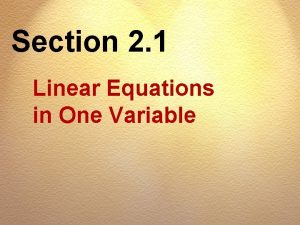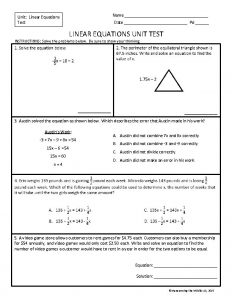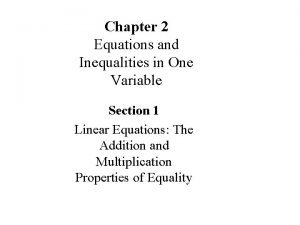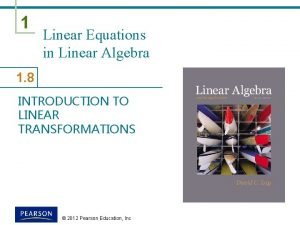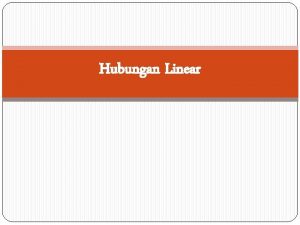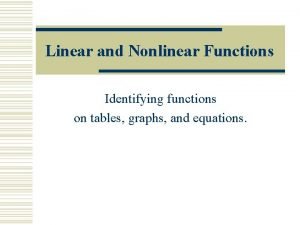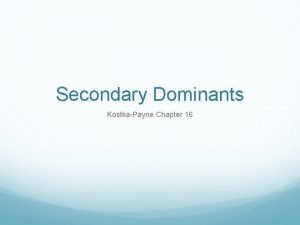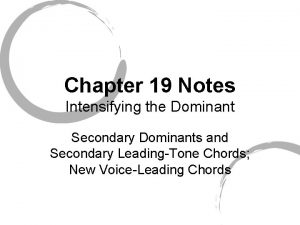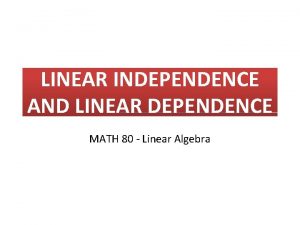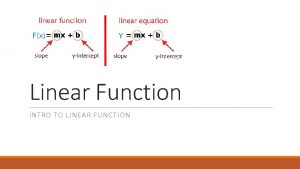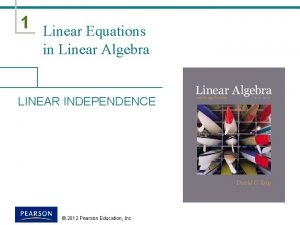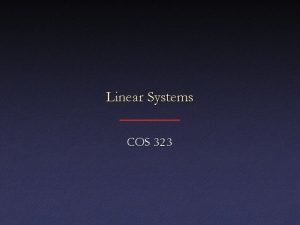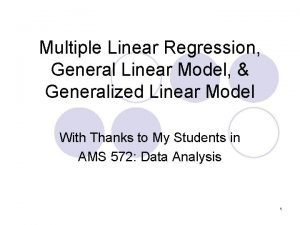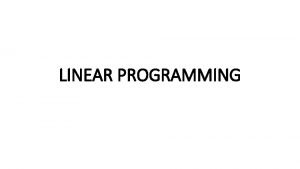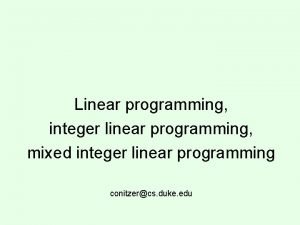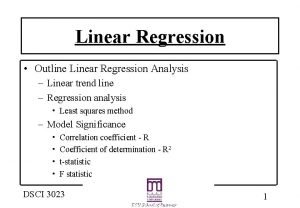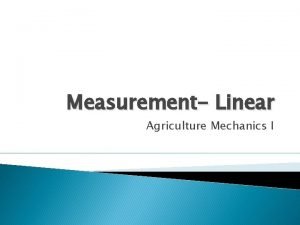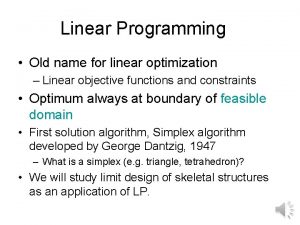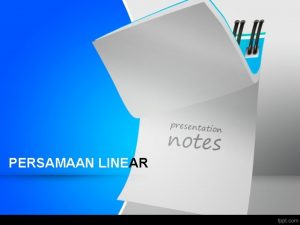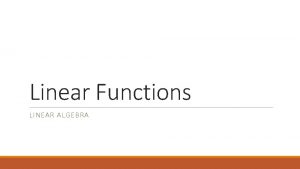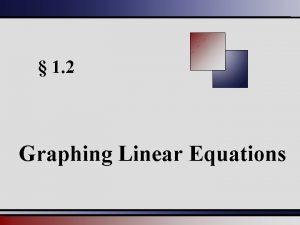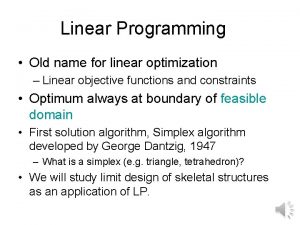Linear Dominants Part I V 6 t and






























- Slides: 30

Linear Dominants Part I: V 6 t and V 4 w

V 7 and Inversions V 7 V 4 w V 6 t V 7 V 4 e V 6 t V 4 w V 4 e


Grade me! A+ or D

V 6 t and V 4 w

I 6 r I I 6 The “Tonic Family”

The Dominant Family

Meet the Dominant Family I. Cadential Dominants (lead to I; strong, cadences) V V 7 V 8 -7 (= V V 7) II. Linear Dominants (form smooth melodic lines) I I 6

Meet the Dominant Family I. Cadential Dominants (lead to I; strong, cadences) V V 7 V 8 -7 (= V V 7) II. Linear Dominants (form smooth melodic lines) Triad Inversions V 7______ 6 6 V VII Inversions of 1 st inversion 2 nd inversion 3 rd inversion V 6 t V 4 e V 4 w bass=7 bass=2 bass=4


V 6/5 and V 4/2 Basics 1. Inversions of V 7; contain 5 7 2 4 and are almost always complete 2. Lead to tonic family chords (I or I 6) 3. Have strong voice leading tendencies: 5=5 (common tone) 7 -8 (always) 2 -1 (why? ) 4 -3 (always) 4. Always use raised 7 (L. T. ) in minor 5. V 6 t and V 4 w are not good phrase-end cadential goals

V 6 t

V 6 t (Dominant 7 th in 1 st inversion) Contents and Bass Tone Closely Related to chord Leads To: Doubling Supports Melody Tones Voice Leading Figured Bass Functions


7 as bass V 6 t

7 as bass V 6 t

7 as bass V 6 t

g min: I V 6/5 I

V 4 w

V 4 w (Dominant 7 th in 3 rd Contents and Bass Toneinversion) Closely Related to chord Leads To: Doubling Supports Melody Tones Voice Leading Figured Bass Functions

a min: c min:


4 as bass V 4 w

4 as bass V 4 w V 6 t V 4 w

g min: I V 6/5 I V 4/2 I 6 I




I I I 6 I V V 6 V I I_____ V___ I I ? ?

Avoid Weak-strong Chord repetition V and V 6 Can’t follow V 7 (or inversions) = “vanishing 4 mistake”
 Simple and multiple linear regression
Simple and multiple linear regression Linear texts examples
Linear texts examples Definition of linear plot in literature
Definition of linear plot in literature Which pipeline is a linear
Which pipeline is a linear Linear and non-linear multimedia
Linear and non-linear multimedia Linear impulse equation
Linear impulse equation Contoh simultan
Contoh simultan Convert right linear grammar to left
Convert right linear grammar to left Difference between linear and nonlinear
Difference between linear and nonlinear Non linear simultaneous equations
Non linear simultaneous equations Part part whole addition
Part part whole addition Unit ratio definition
Unit ratio definition Part part whole
Part part whole What is a technical description?
What is a technical description? It is the vertical part of the front bar
It is the vertical part of the front bar The phase of the moon you see depends on ______.
The phase of the moon you see depends on ______. Part to part variation
Part to part variation Rstuv
Rstuv Linear systems unit test
Linear systems unit test Chapter 2 equations in one variable
Chapter 2 equations in one variable Contoh persamaan non linear
Contoh persamaan non linear Metode newton
Metode newton Contoh soal fungsi non linear hiperbola
Contoh soal fungsi non linear hiperbola Non linear function
Non linear function Linear dependency
Linear dependency Linear algebra linear transformation
Linear algebra linear transformation Cara dwi koordinat
Cara dwi koordinat Linear or nonlinear tables
Linear or nonlinear tables Linear or nonlinear table
Linear or nonlinear table Nonlinear video editing
Nonlinear video editing Right linear grammar to left linear grammar
Right linear grammar to left linear grammar

















